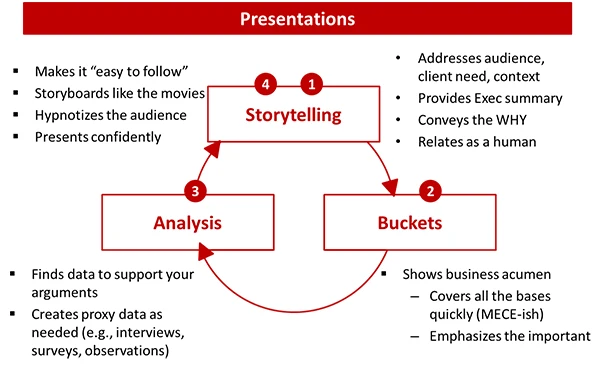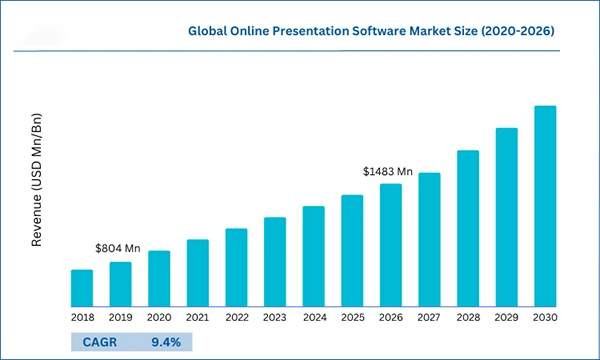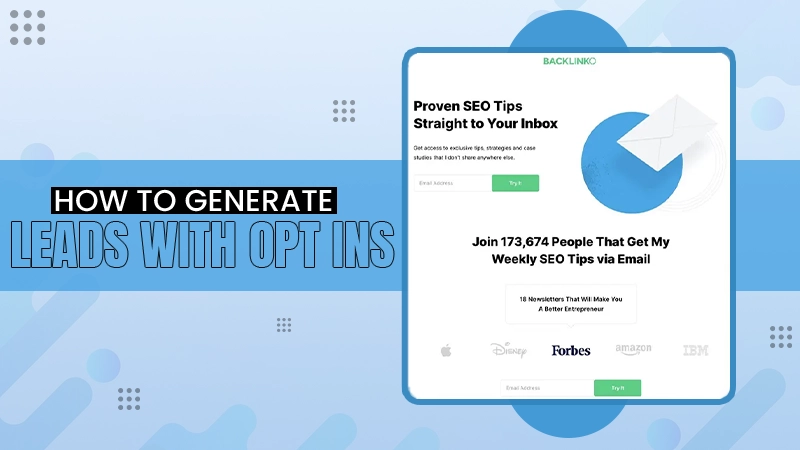Crafting Compelling Presentations: Your Story, Simplified
Jump To Key Section
- Brief on the Power of Storytelling in Presentations
- Draft a Journey and Specify Why Does it Matter?
- Use an Effective Storytelling Framework
- Be Familiar With your Audience
- Use Imagery and Vivid Language
- Incorporate Product/Service into the Presentation
- Follow Aristotle’s Three-Part Story Structure
- Don’t Try to Be Perfect: There Must Be Obstacles
- Final Words

Are you prepping for an upcoming pitch or trying to sharpen your presentation abilities? In this age, where audience choices are abundant, a story-oriented presentation is a determining factor that sets you apart.
The goal of every presentation is to persuade, inform, or entertain your listeners. Its creation can be done manually or be outsourced by PowerPoint presentation writing service.
After exploring numerous studies, we concluded that most effective presenters use the same techniques as great storytellers.
Powerful narration showcases prepositions to connect with the audience on an emotional level.
Read on to learn the making of story-oriented presentations like a breeze.
Brief on the Power of Storytelling in Presentations

Ever since the dawn of civilization, storytelling became a significant role of human communication. Even, people are 22 times more likely to remember a fact when it has been wrapped in a story.
Human brains are wired for stories. Accordingly, individuals incline naturally to seek patterns.
55% of people believes that a great story is primarily what holds their focus during a presentation.
It captivates and helps in simplifying complex ideas.
Draft a Journey and Specify Why Does it Matter?
Starting with, story is more than a list of features or a dry description of what you are going to present. At its core, present your journey/story as narratives that explain what you are? What you have been through, best practices, Why you are putting efforts, etc.
In essence, start from inception to the ultimate purpose, basically, solving a problem for your audience.

Statistics: In the year of 2019, the global online presentation software market size was accounted for USD 804 million. Shortly by 2026, it is predicted to reach USD 1483.9 million at a CAGR of 9.4%.
Use an Effective Storytelling Framework
Crafting a compelling story-oriented presentation is no rocket science. But, for the final product to come out right, a blueprint of the presentation is needed.
Just like, you won’t decorate the cake first, then bake it, and then mix the ingredients. Likewise, in this context, some steps need to be followed the right way.
Here is the basic storytelling path to be adhered to:
- Catchy Intro sets the stage.
- Addressing problems and obstacles depicts the area of improvement.
- What struggles to overcome the obstacle must be listed.
- Make a resolution.
- Conclude with future goals.
Be Familiar With your Audience
Understanding audience persona is way more effective. Each persona represents a different segment of the potential market with unique needs, challenges, and motivations.
According to the Glance Test, within three seconds you can capture your audience’s attention.
Include what they want to see or hear. To know what they want, take benefits of survey by asking them Who are they? What problems are they facing? What are their need? their interest, and what already do they know about your topic.
When you manage to present according to them, audience will definitely connect and participate with full enthusiasm.
Use Imagery and Vivid Language
Descriptive language is mostly preferred to bring story to life and engage audience. Particularly vivid and specific details, they can visualize the characters, settings, and actions.
The elements that contribute to effective presentations include voice (38%), non-verbal communication (55%), and the actual content makes up about 7%, according to SOAP presentations.
For example, instead of telling “We had a successful launch”, say “ The launch was like a rocket soaring into the sky, leaving a trail of flames behind it.
Take Note: Do not play smart and exaggerate things.
Incorporate Product/Service into the Presentation
The moment you are done with your story, don’t just end casually. Indeed, incorporate your product/service into the presentation.
To help you out, here are some tips to weave the same:
- Connect With Problem: Build connection between problem and how you’re gonna solve it. Not only this grab’s audience attention but also helps your prospects identify areas of opportunities.
- Make the most of Visual Aids: 41% of presenters find it challenging to find and use great visuals. To overcome this challenge use infographics, diagrams, videos, and images may be to illustrate features, benefits, and impact.
- Use Analogies: Specially when you are presenting something relating to technology, just use analogy. It makes complex concepts easier to understand.
- Testimonials and Case Studies: Testimonials and case studies makes the presentation more credible.
Follow Aristotle’s Three-Part Story Structure

By following Aristotle’s persuasive story pattern, create a presentation with a message that’s easy to digest, remember, and retell. Here is how to do it:
- Craft the Beginning
Start with a powerful beginning, audience should nod their heads in recognition. For that, describe life as the audience knows it.
Create a baseline of what is and then introduce your vision of what could be. The gap may throw the audience a bit off balance, a good thing. Hence, it jars them out of complacency.
- Develop the Middle
Keep on playing with the contrast between what is and what could be. Here is one way you can achieve this:
- What is: Missed goal.
- What could be: Further planning.
- What is: Resources in hand.
- What could be: Applying assets.
- What is: Demanded.
- What could be: Solution.
The audience finds this more and more alluring.
- Make the Ending Powerful
Do not end with a burdensome to-do list. Instead, include these:
- Include a Call to Action: Inspiring enough so the audience will want to act.
- New Bliss: Describe a blissful future when they adopt presented ideas.
Don’t Try to Be Perfect: There Must Be Obstacles
The biggest of all time, the tip to not try and be a perfect storyteller works most of the time. Good characters aren’t perfect, likewise, good stories aren’t perfect.
This is because, perfect stories seem dull and a bit robotic since there is a void of humanity.
Remember, people sitting in your audience are facing obstacles too, that’s why they have come to you for the solution. However, no one is perfect in this world.
Final Words
To summarize, presentations can be really challenging to put together. There is a lot to consider at a time, otherwise, even a small mistake can make and break an entire presentation.
But, practice your story while keeping these facts in mind to resonate with different personas. Carry this is mind, the best narration strikes a balance between emotional and logical appeals.
So, there is no story/presentation to tell/present than one of genuine transformation and success.







